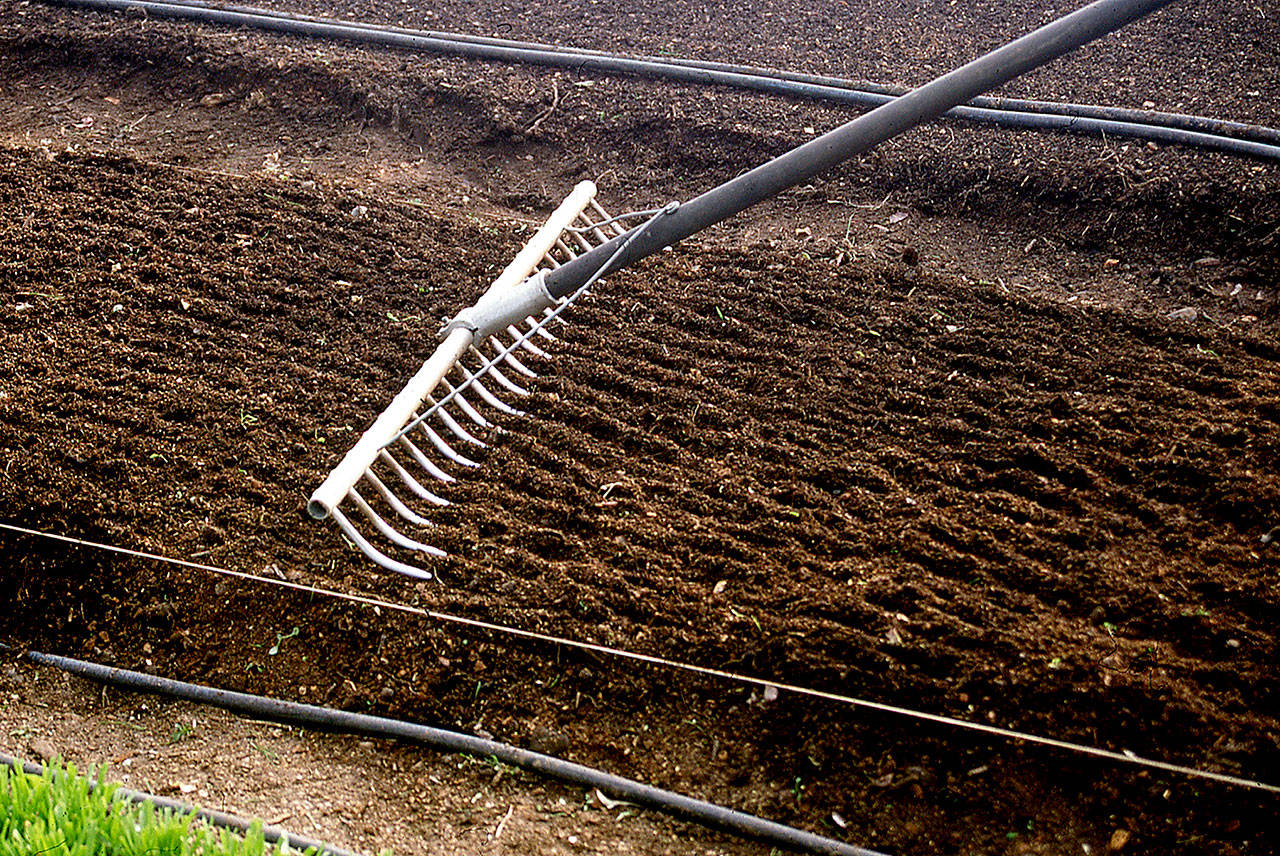By Barbara Damrosch
The Washington Post
There are many ways to make a garden bed, but one thing is constant: The soil within it should have the lightness of a fluffed-up pillow and the loft of a down-filled duvet. Adding plenty of organic matter is key to building a plant-friendly soil like that. But the bed’s design has much to do with keeping it that way.
When I was growing up, most vegetable gardens looked like small versions of a farm field, with plants in long rows. The gardener would walk between those rows to plant, cultivate and harvest. It wasn’t the most efficient use of space, and it involved a lot of stepping on plant roots that grew under the paths.
Trodden soil is compacted soil, with poor aeration. That reduces the amount of oxygen available to plants and to the organisms that give the soil its life. Compacted soil drains poorly, so the spaces between soil particles become waterlogged and further deprived of air. It’s also hard for plant roots to penetrate, hard for earthworms to navigate and hard for a gardener to work.
With loose, fluffy soil, you can make a hole for a transplant with a swift scoop of your hand and pull most weeds with a quick yank. If you’ve ever labored over weeds growing in a much-trodden path, you know what I mean.
A bed system, as opposed to a single-row system, is kinder to your plants, and to you. Plants grow in close-together rows or grids in an area — usually a square or a rectangle — that belongs just to them. Gardeners’ hands and tools can reach into the bed, but never their feet.
This sort of layout goes back to the Middle Ages, when small, enclosed gardens were tended within castle courtyards and monastic cloisters. They were often edged with small barriers such as low wattle fences made with pliant branches, or tiny living hedges of germander and trimmed boxwood. This style made its way into early America and can be seen at living-history museums such as Colonial Williamsburg and the more rustic Plimoth Plantation, where beds are edged with stones and wooden boards.
Kitchen garden beds had a revival in the late ’60s and ’70s, largely by way of Alan Chadwick, a charismatic British actor and gardener who brought the “French-intensive” method of growing food to California and from there to back yards all over the country.
Influences on Chadwick ranged from the closely planted market gardens on the outskirts of French cities to the cosmological horticulture of Rudolf Steiner in Germany. Chadwick favored beds that were very deeply dug, and raised as well, so that they were fertile and fluffy 18 inches down.
Most people who tried the Chadwick way (myself included) found it too labor-intensive. But the simple idea of raised beds did take hold, and soon those little boxes were everywhere. Apart from the great soil aeration and drainage they afforded, they made gardening easier for people.
For those with disabilities, a fairly tall box meant less bending and stooping. Close planting helped shade out weeds. Better yields from a small space meant less space to tend. Raised beds warmed up more quickly in spring. (Then again, they dried out more quickly in dry summer weather.)
Ultimately, I think much of their appeal was psychological. Their graph-paper-like geometry made the garden seem under one’s control.
I tried wood-edged gardens, too, but I preferred to pare the bed idea down to its ultimate simplicity: loose soil in beds surrounded by trodden paths.
At our place, beds are defined with corner pegs and string. Paths are made with a long-handled pointed shovel, skimming off the soil surface just a bit and tossing it into the bed. Then the soil is amended with compost, which is incorporated shallowly with either a three-tine cultivator or a mechanical tilther.
After that, the bed is raked and smoothed with a large, aluminum bed-forming rake, leaving it flat and level on top.
I never make a bed more than 4 feet wide, the better to reach into it. Often the beds are permanent ones, in which the deeper soil is aerated from time to time with a large, heavy, gravity-driven tool called a broad fork.
Our beds look slightly raised, but what you’re seeing is simply the difference between trodden and untrodden ground. My sister says that this distinction is so obvious and easily learned that you can teach it to both dogs and very young children. You just tell them, “Bed fluffy, path hard.” And they stay on the path every time.
Barbara Damrosch is the author of “The Four Season Farm Gardener’s Cookbook.” Her website is www.fourseasonfarm.com.
Talk to us
> Give us your news tips.
> Send us a letter to the editor.
> More Herald contact information.

























